
I’d booked a nine-day trip to Panama I’d stumbled upon with Intrepid, which included a few days in Panama City. The tour was set for the following month. I was assured there was space, so I paid the invoice in full and booked my flight.
The very next day, Intrepid called to say they couldn’t confirm a room for me at one of the places we’d be traveling to, so they’d have to refund my money. Ugh. I had just purchased my ticket the day before—but luckily, I was still in the 24-hour cancellation window. At first I thought about canceling everything, but then I reconsidered. Why not just go anyway? I’d never been to Panama, and it felt like the perfect chance to see it on my own.
Sure, I’d have to do a little extra work planning things myself, but it’s not like I hadn’t done that before. So I came up with my own itinerary, booked a few hotels, and kept the flight I’d already bought. Without a group schedule, I could do what I wanted—wander Casco Viejo, pick my own meals, and linger where I felt like it. That cancellation turned out to be the best thing that could’ve happened. Panama was a fantastic place for solo travel.

I spent four days in Panama City before heading to El Valle de Antón for three days of hiking and a completely different vibe. (Check out my blog, El Valle de Antón: 3 Days of Hiking and Exploring Nature in Panama, for all the details on that part of the trip.
Panama City is the capital and biggest city in the country, with around 1.5 million people. It was founded back in 1519 and played a big role in Spain’s trade routes, especially moving gold and silver. These days, of course, it’s most famous for the Panama Canal, which is still one of the busiest shipping routes in the world.
The city itself is a mix of shiny high-rises and banks downtown, and then Casco Viejo—the historic quarter with cobblestone streets, colorful old buildings, and lively plazas. You can also visit the ruins of Panamá Viejo, which was destroyed by pirates in the 1600s. Walking around Casco Viejo, you can see how the buildings reflect different influences—Spanish, French, Caribbean—all layered together.
The weather is tropical, which means hot and humid all year. There’s a dry season from about December to April and a rainy season the rest of the time. Even in the wet season, the rain usually comes in quick afternoon bursts.
Food is easy to love here. Ceviche and seafood are everywhere, thanks to the coast, and you’ll also find plenty of plantains, yucca, and rice in local dishes. On top of that, the city has tons of international restaurants, so it’s just as easy to get sushi or pizza as it is to grab something local from a street stall.
With that little bit of background, here’s how my four days in Panama City played out. I mixed in the big sights—like the Canal and Casco Viejo—with plenty of wandering, food stops, and a few surprises along the way.
I landed at Tocumen International Airport (PTY) in the afternoon. Passport control was quick and straightforward. After grabbing my bag, I met my driver for the 40-minute ride to my hotel in Casco Viejo. On the way, I caught glimpses of Panama City’s skyline— sleek glass towers rising above the water. The city sits at the Pacific entrance of the Panama Canal, bordered by the Pacific Ocean and the canal itself. As we neared the center, colorful murals and street art brightened the streets.

About ten minutes from my hotel, torrential rain poured down from the sky. It didn’t last long, but it made me appreciate my umbrella—not just for the quick November downpours but also for the strong Panamanian sun.
When I arrived at La Concordia Boutique Hotel, I was relieved to find it lived up to its reviews. My room was spacious, clean, and inviting, with a large, comfortable bed. Two sets of double doors led to a private second-floor balcony. There was even a table and chairs—the perfect place for me to enjoy a cup of coffee in the mornings.

The view of the streets from my balcony was great. The nearby streets were full of colorful buildings, many with iron balconies and detailed trim. The mix of colonial architecture and modern touches gave the neighborhood a fun and inviting feel. I could tell right away this was going to be a fun city to explore.

The only downside? Panamanians love to party—which isn’t a bad thing, of course, just not ideal when you’re trying to get some sleep. Several clubs and bars kept the area lively well into the early hours—including the rooftop at my own hotel. The thumping music made for late nights on the evenings I stayed in, but if you’re into nightlife, the location couldn’t be better.
After settling in, I wandered through Casco Viejo, exploring its narrow streets and small shops. One building really stood out with its ornate blue trim and oversized windows. It turned out to be a speakeasy—by day, it was a beauty salon, but at night, a hidden door in the back wall led to a nightclub.

For dinner, I headed to Restaurant Santa Rita, a vegetarian-friendly spot with some great options. I tried several items from their menu, including the avocado salad, grilled eggplant, and green fried plantains. They also had an extensive wine and cocktail list, but I was in the mood for a cocktail and went with a margarita—a great choice. The food and atmosphere made for a great experience.
Later, I headed up to the hotel’s rooftop bar, The Day Jon Died. Known for its craft cocktails, small bites, and stunning views, it did not disappoint. The friendly staff made the experience even better.
After I sat down, my waiter arrived with a Polaroid camera in hand and, surprisingly, asked if he could take my picture. Afterward, he took my drink order—a margarita. My waiter came back with the same drink—this time served with a Polaroid clipped to the glass. Sitting under the open sky, surrounded by the twinkling lights of Panama City, and sipping my drink was the perfect way to end my first day.
I’d booked a tour through Get Your Guide: Panama: Boat Ride into the Panama Canal, Monkey Island, and a Sloth Sanctuary. The day began with a drive to Lake Gatun, passing neighborhoods built for American workers during the Panama Canal’s construction. These areas still have a mix of old buildings and remnants from that era.
We boarded a small boat at the Gamboa Boat Ramp and set off toward Monkey Island (Isla de los Monos). From the water, we could see the Chagres River and catch a glimpse of the Gamboa Rainforest Resort in the distance.
As we traveled through the Panama Canal’s waterways, we passed under a low bridge, ducking to avoid hitting its underside. We also spotted several cargo ships—some heading toward the Miraflores Locks (Las esclusas de Miraflores) and others coming from them. Our guide shared insights about how the locks operate as we continued along the canal’s path.
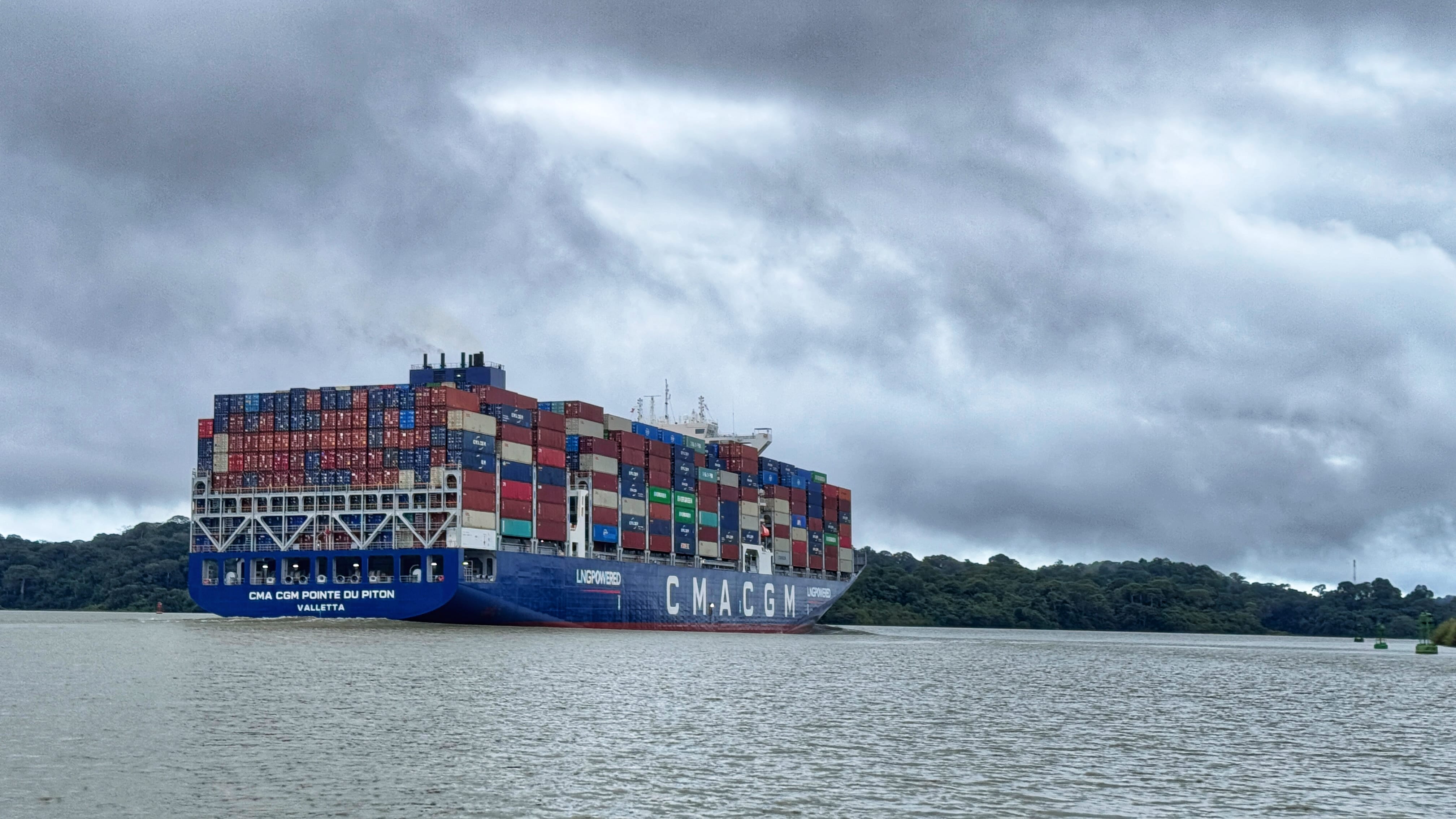
The jungle surrounded us, alive with the sounds of the rainforest, a reminder that this region is part of the vast tropical forest covering much of Panama.
At Monkey Island, we were greeted by Capuchins, Howler monkeys, and Geoffroy’s tamarins. The capuchins were the boldest, hopping onto the boat to grab the grapes and bananas we’d brought—clearly accustomed to associating visitors with food. The tamarins were more cautious at first but eventually ventured onto the boat as well. The howler monkeys though, stayed high in the trees, their deep calls echoing around us.

I’m not a big fan of feeding monkeys, but watching them climb onto the boat—and even having one or two take fruit directly from my hand—made for a fun experience and a highlight of the tour.

Unfortunately, the rest of the tour didn’t live up to expectations. The Gamboa Sloth Sanctuary was underwhelming, with all the sloths asleep, and the butterfly garden added little to the experience. We also stopped at a small local café for coffee and an empanada, but both were disappointing—the coffee was terrible, and the empanada was cold and greasy. I had hoped for more, especially in a country known for its excellent coffee.

A quick visit to the Gamboa Rainforest Resort was nice enough. The pool, surrounded by tropical plants, and the views from the hotel balcony were beautiful. It felt like it would have been a great place to stay for a day or two, with a completely different vibe from the city and plenty of hiking trails nearby. But in our case, we were really just there to kill some time before our scheduled tour at the sloth sanctuary.

While Monkey Island is only accessible through a tour, I suspect many tours include unnecessary stops to justify their cost. If the boat ride and the monkeys are what you’re really interested in, it might be worth looking into whether you can book a boat directly to Monkey Island and skip the extra stops. I’m not sure if that’s an option, but it seems like it would make for a much more relaxed and enjoyable experience.
Back in Casco Viejo, I stopped at a little café called Morah to cool off with a cold Balboa beer and some crispy fried green plantains.”

From there, I spent the afternoon wandering the neighborhood, popping into the little shops that line so many of its streets. At some point I may have even treated myself to a gelato before carrying on. The browsing was half the fun, but I did end up finding a few things I couldn’t resist—a mola tote bag handmade by the Guna people and one of the colorful woven masks. I believe the shop owner mentioned the masks were made by the Emberá. Both felt like such unique pieces of Panama to bring home.
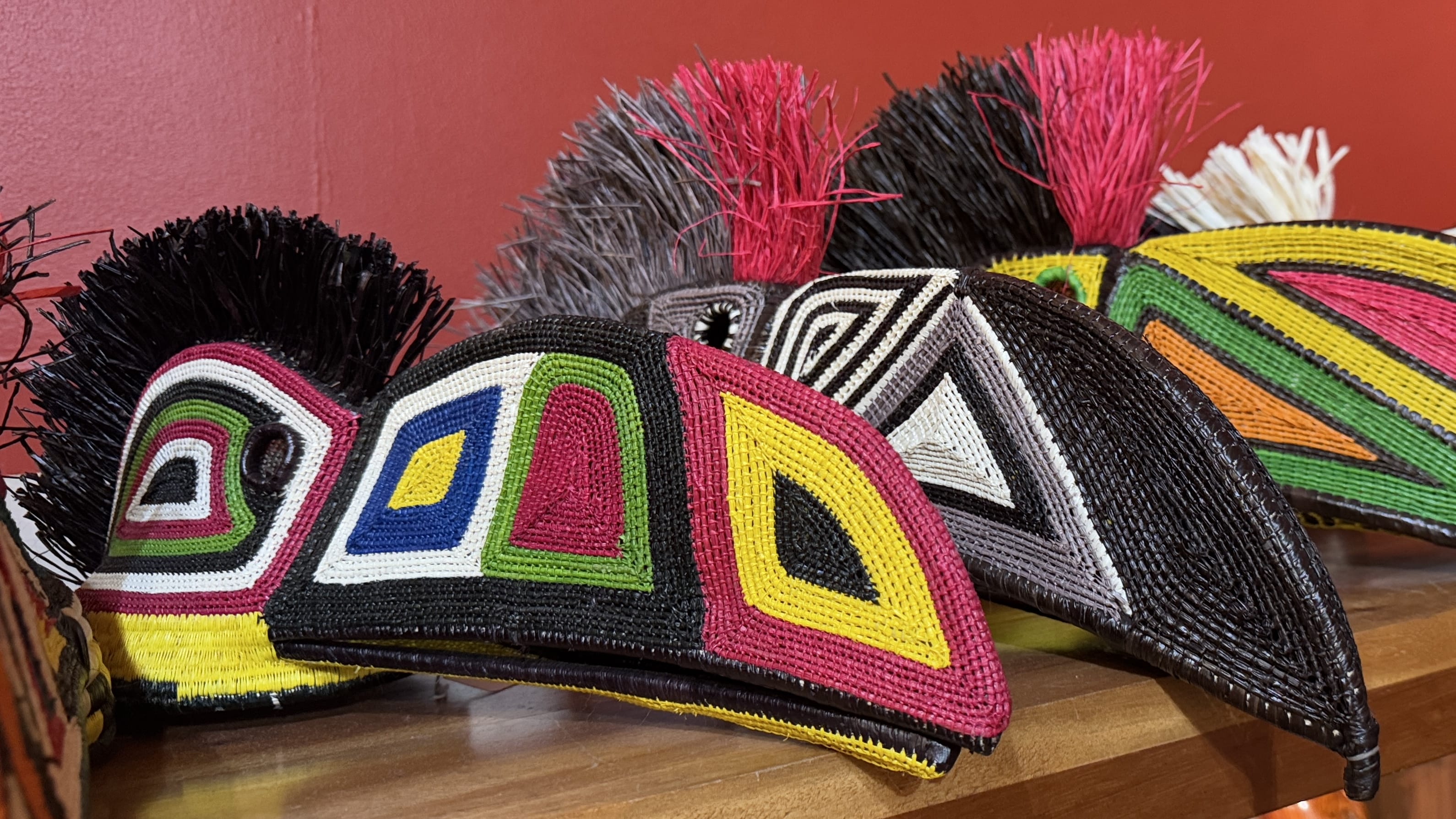
Dinner that night was at Mahalo Cocina y Jardín, a small, welcoming spot about a ten-minute walk from my hotel. The staff was friendly, the vibe was relaxed, and the menu had plenty of creative vegetarian options. I started with a Rum Rhapsody cocktail—beautifully presented and just as good as it looked—then had roasted carrots and jackfruit paella.
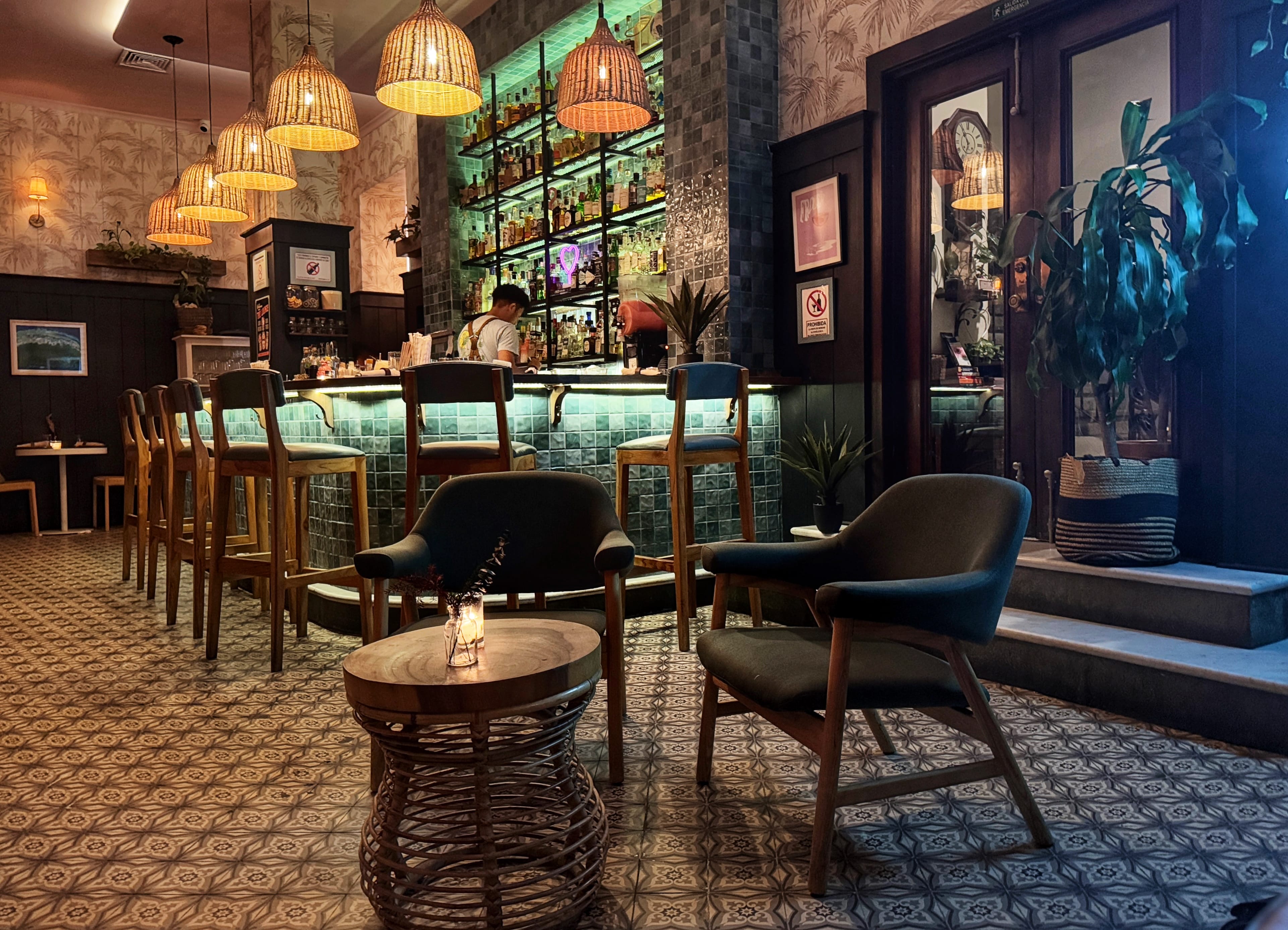
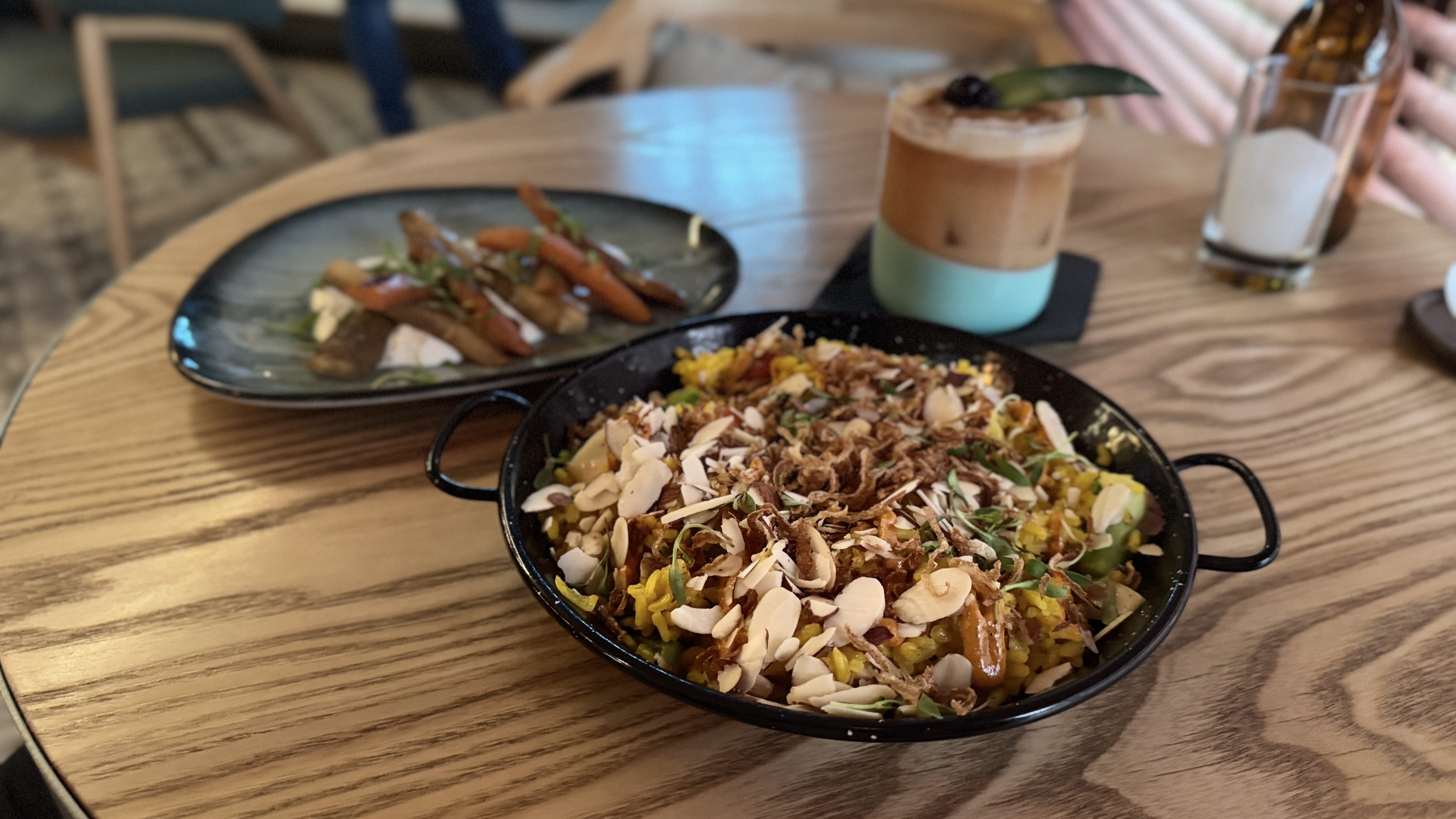
Between tonight’s meal and the one I had the night before, I was already impressed with Panama City’s food scene. Both restaurants had been not only delicious but also attentive to me as a solo diner, which made the experience even better.
I joined the Legends of Casco Viejo: Uncovering Hidden Gems walking tour which I booked through Viator. The guide was fantastic—well-informed and enthusiastic, sharing fascinating stories about Casco Viejo’s layered history.
The tour began at Plaza Herrera, a square surrounded by colonial-style buildings. At its center stands a statue of Tomás Herrera, a national hero who played a key role in Panama’s fight for independence.
Casco Viejo, meaning “Old Quarter” or “Old Shell,” was built after the destruction of Panama Viejo. The name also reflects its original design as a fortified settlement. The area was once completely enclosed by walls, with a single gate for access, and its streets were laid out in a grid to make defense easier.
From Plaza Herrera, we walked down an alley to an area where a section of the old city wall still stands. Much of the wall was removed in the 19th century when Panama began to expand during the California Gold Rush, but some remains are still intact.

We continued into Santa Ana, a lively neighborhood just outside the original walls. While some parts are still run-down, Avenida Central, its pedestrian street, is vibrant and lined with shops and vendors selling everything from clothing to electronics. The colorful buses known as Diablos Rojos with their bold paint and loud personalities, added even more character to the scene.

After leaving Calle Colón and Santa Ana, we crossed the Cinta Costera, the highway circling Casco Viejo. On the other side, we climbed some steps to the waterfront. From there, we reached the Walkway of the Vaults, built on the remnants of an old Spanish sea wall. The views were fantastic—Panama City’s modern skyline in the distance, the Bay of Panama stretching out ahead, and the historic streets of Casco Viejo behind us. Vendors and artists lined the walkway selling crafts.
From the walkway, we wandered into Plaza Bolívar, with its monument to Simón Bolívar at the center.
Next was Plaza de la Independencia, where Panama declared independence from Spain in 1821. Finally, we stopped at Plaza de Francia, which honors the French attempt to build the canal. The plaza’s obelisk, topped with a rooster, caught my eye. The rooster symbolizes vigilance and pride—fitting for the canal’s story.

Other highlights included the beautifully restored Metropolitan Cathedral and the and the Iglesia de San José, known for its stunning Golden Altar (Altar de Oro) and its wooden-beamed interior.
Back at Plaza Herrera, where the tour ended, I remembered reading about Special Gourmet Restaurant and their highly recommended empanadas. I stopped in and tried the eggplant and zucchini one—it lived up to the hype. To cool off afterward, I grabbed an iced coffee from Casa Sucre Coffeehouse. Honestly, it was just nice to sit, slow down, and soak in the feeling of being in Panama City.
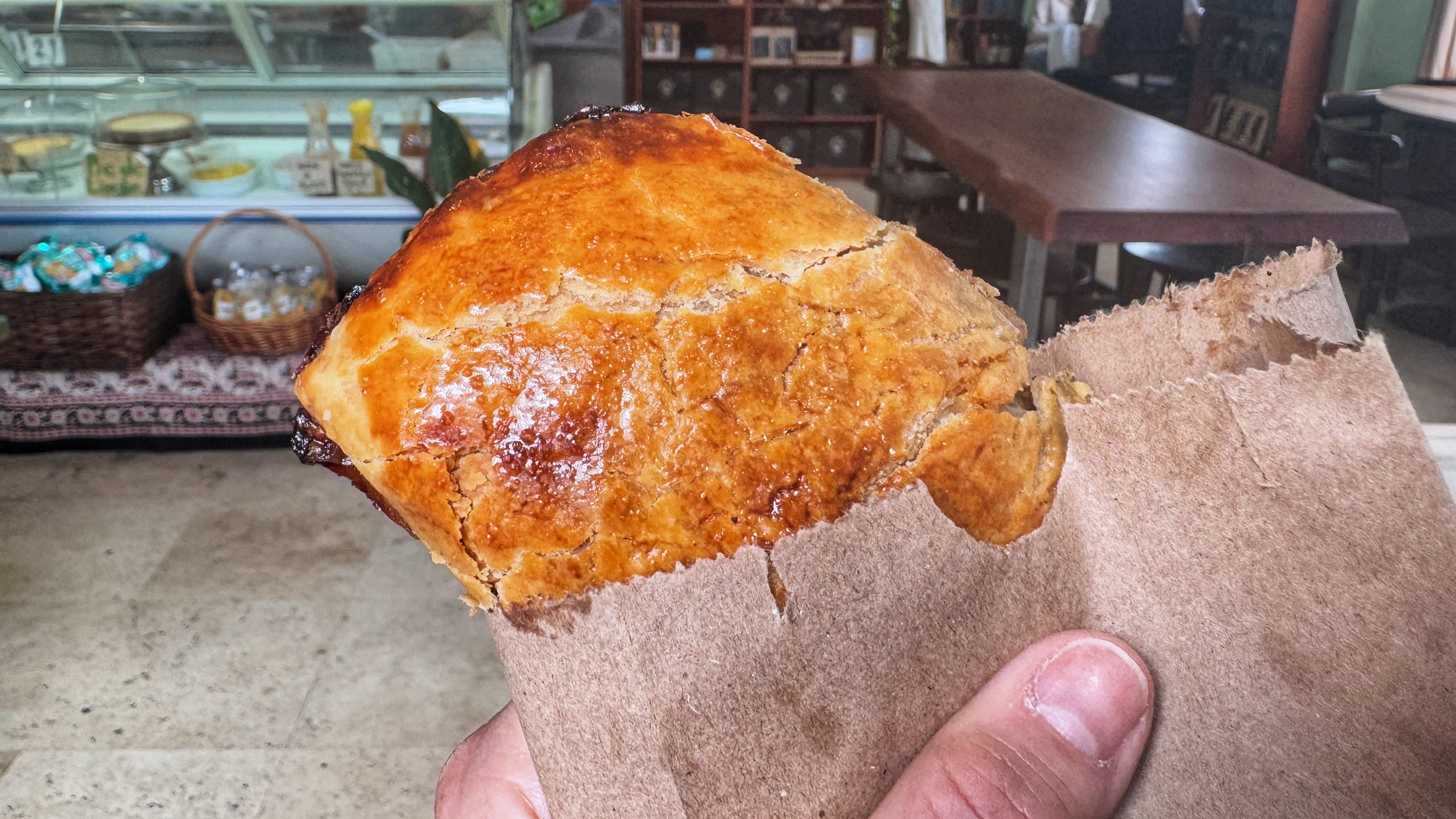
Later in the afternoon, I headed to Nomé Chocolate for a chocolate-making class. The owner, originally from Chiriquí, discovered his love of chocolate while in Switzerland and brought that passion back to Panama.
The class was hands-on, covering the process from cacao pod to chocolate bar. My creation was simple—cranberries and walnuts—but delicious. While we waited for our bars to set, we sampled others, and to my surprise, my favorite was the passionfruit-filled one. I’m usually not a fan of filled chocolates, but this one was incredible. My own bar didn’t even make it back to the hotel; I ate it as soon as I stepped outside.

For dinner, I headed to Snack Shack, a cozy little place just an eight-minute walk from my hotel. The menu focused on vegan and vegetarian dishes, and I went with the jackfruit tacos. They were packed with flavor and had just the right amount of spice. The service was a little rushed—they cleared my plate before I finished my second taco—but the food more than made up for it.

The day started with a visit to the Miraflores Visitor Center for an up-close look at the Panama Canal. I booked an Uber and asked the driver to wait an hour—an easy and affordable way to do it. The center has several viewing platforms, and I managed to snag a front spot to watch the locks in action.


I got lucky with the timing—seeing a large cargo ship, two tugboats, and a recreational boat move through. Watching the process was fascinating, and since timing can be hit-or-miss, I was thrilled my morning worked out so well.
The IMAX film, narrated by Morgan Freeman, gave a great overview of the canal’s history. It explained the challenges faced by the French and how the U.S. eventually succeeded in completing the project. The locks operate using gravity and water from Gatun Lake, raising and lowering ships to connect the Atlantic and Pacific Oceans. Seeing the water levels rise and fall in real time was a highlight of the visit.
After leaving the visitor center, I went to the Panama Canal Museum in Casco Viejo to learn more about the canal’s history. The exhibits covered everything—from the engineering it took to build the canal to the lives lost during construction. It gave me a whole new appreciation for how important the canal is and what it took to make it happen.
Later, I visited the Mola Museum— dedicated to the colorful textiles made by the Guna people. The intricate patterns and cultural significance behind each design were fascinating. Learning about the symbolism made me appreciate them even more, and I couldn’t resist picking up a tote bag embroidered with a mola design at the nearby Mercado Nacional de Artesanías.
For dinner, I stopped at Vegan Shack, tucked away on a quiet street. The food was delicious and fresh, and it was the perfect spot to unwind. Just as I was leaving, it started pouring—hard. Just as I was leaving, it started pouring—hard. Once again, I was glad to have my umbrella.

I ended the evening at Pedro Mandinga’s Rum Café, where I enjoyed a Cáscara Spritz and some plantain chips. The relaxed, lively vibe made it the perfect way to wrap up my last night in Panama City.
Before heading to El Valle de Antón, I realized I hadn’t made it to the Mercado de Mariscos (Fish Market) yet, so I took one last walk around Panama City to check it out. The place was full of life—vendors shouting out deals, the smoky smell of grilled seafood in the air, and stalls loaded with fresh catches. It felt like the perfect last glimpse of the city before moving on
I tried the coconut rice and some fried green plantains from a nearby restaurant—one of my Uber drivers had insisted I give the rice a try—and it didn’t disappoint. The rice was creamy and flavorful, a perfect send-off from the city. As I ate, I couldn’t help but reflect on how much I’d packed into my time in Panama City. From the historic charm of Casco Viejo to the awe of the Panama Canal, the city had given me a mix of culture, history, and vibrant energy.
I had prearranged the drive to El Valle de Antón through DayTrip for the next part of my adventure. The city’s skyline faded in the rearview mirror, replaced by lush greenery and rolling hills. It was bittersweet to leave, but I was excited for what awaited in the mountains. (More on that in my El Valle de Antón: 3 Days of Hiking and Exploring Nature in Panama blog.)
These little details made my trip a lot easier, and I hope they help you, too!
Panama is on U.S. Eastern Time, so you won’t need to adjust your clock if you’re traveling from the East Coast.
Staying in Casco Viejo is a great choice—it’s charming, easy to walk around, and puts you close to the action.
Always carry an umbrella. Panama’s weather can be unpredictable, with sudden rain showers, and the sun can be intense when it’s out.
Panama uses the U.S. dollar, which makes things simple—no need to deal with currency exchange.
El Valle de Antón: 3 Days of Hiking and Exploring Nature in Panama
Extend your Panama adventure into the mountains with three days of hiking, waterfalls, and fresh air just a couple of hours from the city.
5 Days in Ohrid, North Macedonia
A relaxed solo trip by the lake, with historic churches, boat rides, and some of the most beautiful sunsets in the Balkans.
Skopje in 3 Days: Confused, Impressed, and Kinda into It
My solo wander through North Macedonia’s quirky capital — a mix of statues, history, and a side trip to Matka Canyon.
3 Days in Split, Croatia: History, Architecture, and Seaside Charm
Exploring Roman ruins, narrow alleys, and the Adriatic coastline — a perfect solo trip for history and sea lovers.